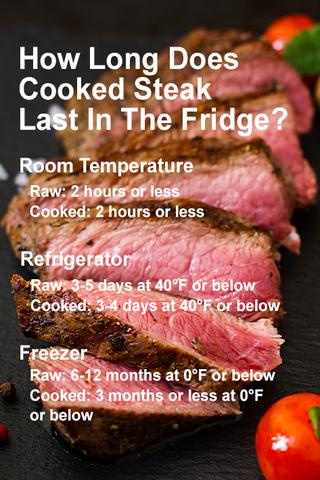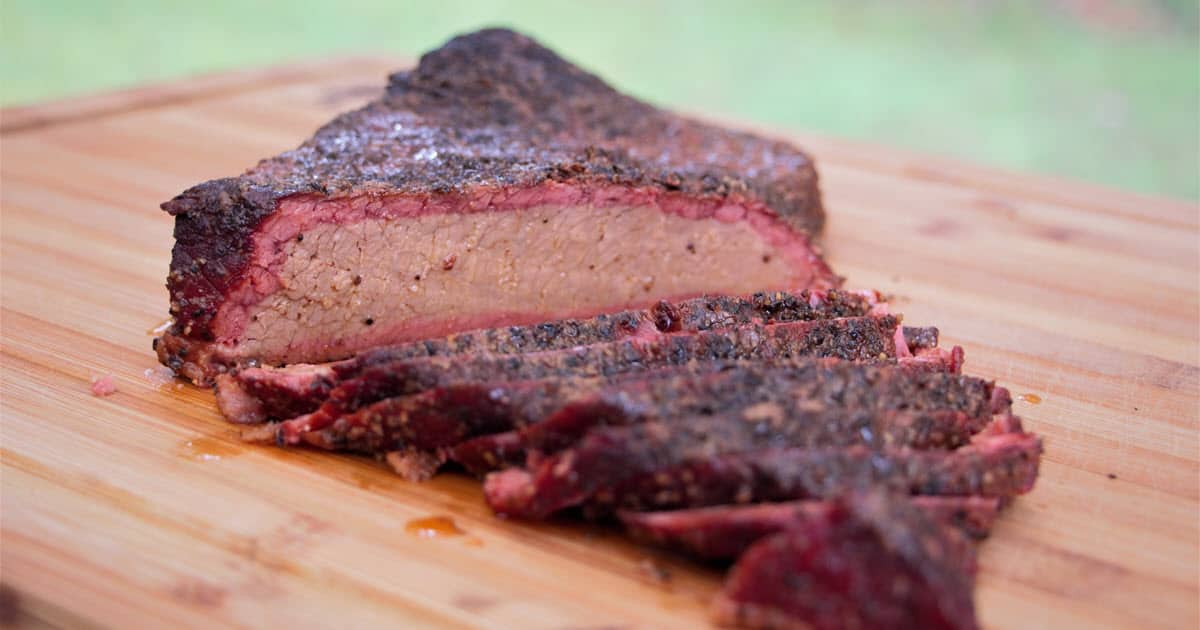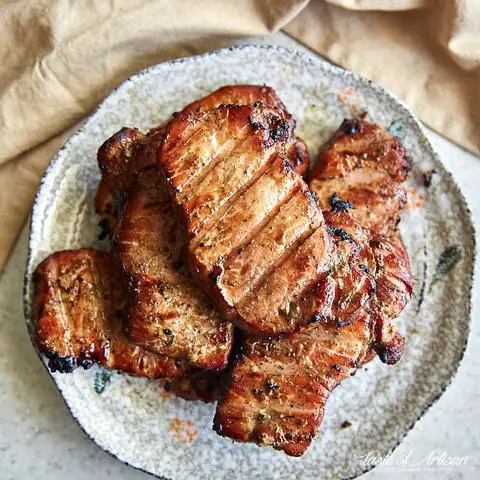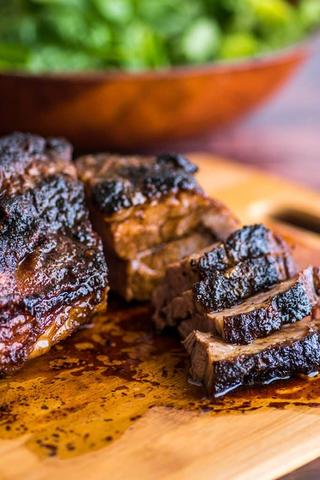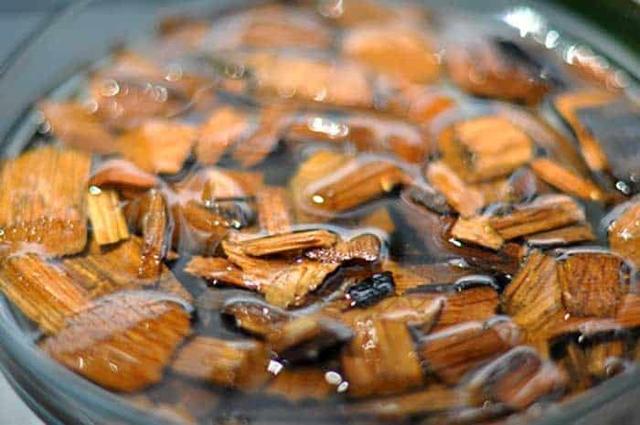
“Unlock the Secrets of Perfect Grilling: To Soak or Not to Soak Wood Chips? Discover the Truth Behind Infusing Smoky Flavors with Expert Insights and Unleash Your Culinary Skills!”
Soaking Wood Chips: Why It’s a Waste of Time

In the world of barbecue, there is a common belief that soaking wood chips before smoking is necessary. However, this concept has been proven to be ineffective and a waste of time. The idea behind soaking wood chips is to prevent them from combusting into flames and instead, smolder slowly without a flame. But in reality, soaking wood chips only delays the smoldering process.
Testing has shown that when wood chips are soaked in water, very little moisture actually penetrates the wood. The surface may feel wet, but the cross-sections of the wood remain dry. This means that any initial “smoke” produced when placing soaked wood chips on the fire is actually steam. Soaking for longer periods of time, such as 24 hours, yields similar results – minimal water penetration and no significant difference in burn time.
Instead of soaking wood chips, it is perfectly acceptable to place them directly on top of charcoal or use alternative methods like smoker tubes or aluminum foil packets to prevent them from catching fire. Soaking wood chips serves no meaningful purpose and can even prolong the production of smoke. It’s best to skip this step and focus on properly preparing your barbecue for optimal results.
The Idea Behind Soaking Wood
The idea behind soaking wood chips or chunks before smoking is to prevent them from combusting into flames and instead, smolder slowly without a flame. The belief is that water helps to prevent combustion when the wood is placed on the fire. However, this concept has been tested and proven to serve no meaningful purpose.
When wood is soaked in water, the first thing that needs to vaporize is the water. Only after that can the hardwood smolder. Soaking wood chips only delays how long it takes for the wood to smolder, but it does not prevent combustion if the lid of the smoker is opened at any point after the water has vaporized.
While some people may have had experiences where soaked wood chips “spontaneously combust” upon adding them to the fire, this is not a common occurrence. In reality, all you need to do is place the dry wood chips or chunks on the fire and close the lid. If they catch fire initially, closing the lid will cause them to smolder.
Testing This Theory
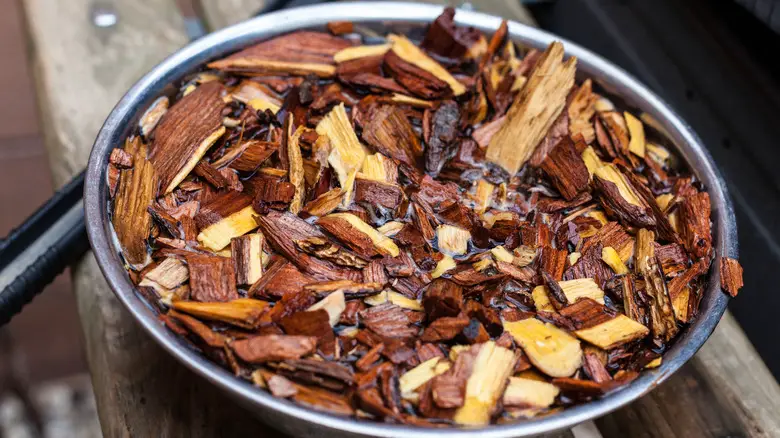
To test the theory of soaking wood chips before smoking, the author conducted an experiment using hickory wood chunks and chips. The wood was submerged in water for two different durations – 30 minutes and 24 hours. Upon visual inspection, it was found that very little water had penetrated the wood, even after 24 hours of soaking. The surface of the wood felt wet to the touch, but the cross-sections felt dry.
The author concluded that soaking wood chips does not serve any meaningful purpose in smoking. The moisture on the surface of the wood will be vaporized when placed on the fire, delaying how long it takes for the wood to smolder. Therefore, any initial smoke seen when using soaked wood chips is actually steam rather than smoke. The author suggests that simply placing dry wood chips, chunks, or pellets on top of charcoal and closing the lid will result in proper smoldering without the need for soaking.
30 Minute Soaking Wood Test
In the 30-minute soaking wood test, the author submerged a chunk of hickory and several hickory wood chips in water. The visual inspection of the blue dye showed that no water penetrated the wood, although the surface felt wet to the touch. The cross-sections of the wood felt dry to the touch. This test demonstrated that soaking wood chips for 30 minutes does not effectively penetrate moisture into the wood, rendering it ineffective in preventing combustion when placed on fire.
To further illustrate that soaking wood chips is a waste of time, an extreme application was tested by submerging a chunk of hickory and several hickory wood chips in water for 24 hours. The visual inspection of the blue dye showed that almost no water penetrated the wood, especially in the case of the wood chips. While there was slight ingress of moisture on the edges of wood chunks, the surface and cross-sections still felt dry to the touch. This test conclusively proved that soaking wood chips for an extended period does not result in effective moisture absorption and ultimately delays smoldering rather than preventing combustion.
24 hour Soaking Wood Test
In order to fully test the concept of soaking wood chips, I conducted a 24-hour soaking wood test. I submerged a chunk of hickory and several hickory wood chips in water for a full day. However, upon visual inspection, it was clear that almost no water had penetrated the wood, especially in the case of the wood chips. The surface of the wood felt wet to the touch, but the cross-sections felt dry.
This experiment clearly demonstrates that soaking wood chips for an extended period of time does not effectively penetrate the wood with moisture. Therefore, any initial smoke seen when placing soaked wood on a fire is actually steam from the surface moisture being vaporized. This means that soaking wood chips for 30 minutes or even 24 hours serves no meaningful purpose in preventing combustion or enhancing smoldering.
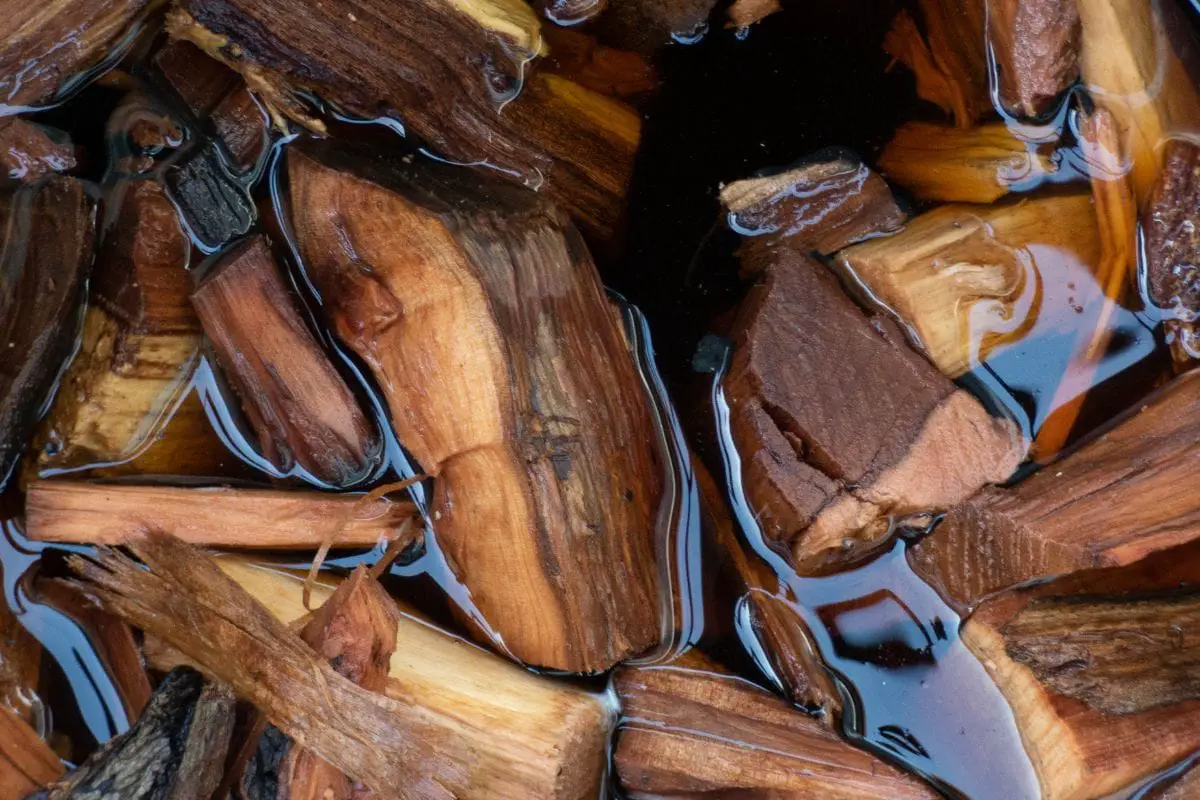
Takeaways from This Experiment
1. Soaking wood chips before smoking serves no meaningful purpose. The goal is to smolder wood or burn it slowly without a flame, and soaking the wood only delays how long it takes for it to smolder.
2. Wood chips do not absorb water, so soaking them does not make a difference in burn time or smoke production.
3. Opening the lid while soaked wood chips are smoldering can still cause them to combust or catch on fire, as any surface water has already vaporized.
4. It is unnecessary to soak wood chips in water before smoking. Simply place them on top of charcoal or use a smoker tube/box to prevent them from catching fire.
5. Wood chips can be wrapped in aluminum foil packets with holes punctured for smoke to escape, or crumbled foil can be used around the chips/pellets for the same desired effect as a smoker box/tube.
Better Solutions to Soaking Wood
After conducting tests and debunking the myth that soaking wood chips before smoking has any real benefits, it is clear that there are better solutions to achieve desired results in barbecue cooking.
Instead of wasting time and effort on soaking wood chips, there are alternative methods that can be used to prevent the wood from combusting into flames while still achieving optimal smoldering and smoke production. One option is to use a smoker tube or a smoker box, which allows for controlled smoke release without the risk of flare-ups. These devices can be filled with dry wood chips or pellets and placed on top of the lit charcoal.
Another effective technique is to wrap the wood chips in an aluminum foil packet, puncturing holes for smoke to escape. This method creates a barrier between the fire and wood, preventing direct contact and reducing the chances of combustion. The foil packet can then be placed on the hot coals for smoldering and smoke generation.
In conclusion, soaking wood chips before grilling remains a matter of personal preference. While soaking can prolong smoking time and produce more smoke, it may also delay the start of the smoke and affect flavor. Ultimately, experiment with both methods to determine what works best for your taste and desired outcome.
Learn More About Grilling
If you want to learn more about grilling, check out these other helpful resources!

